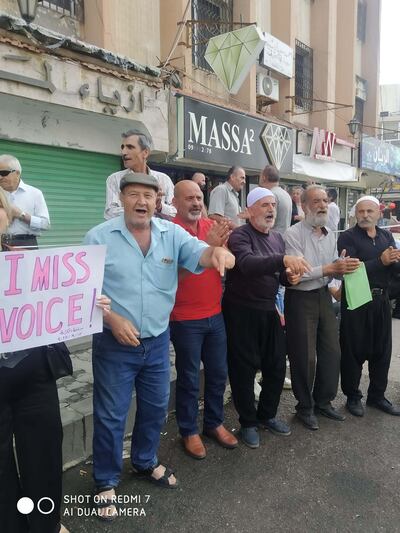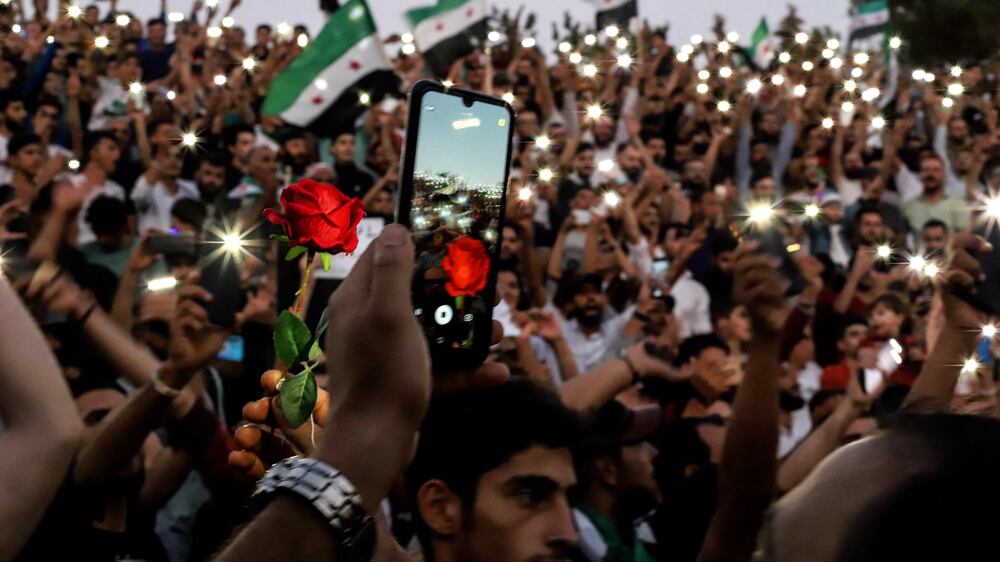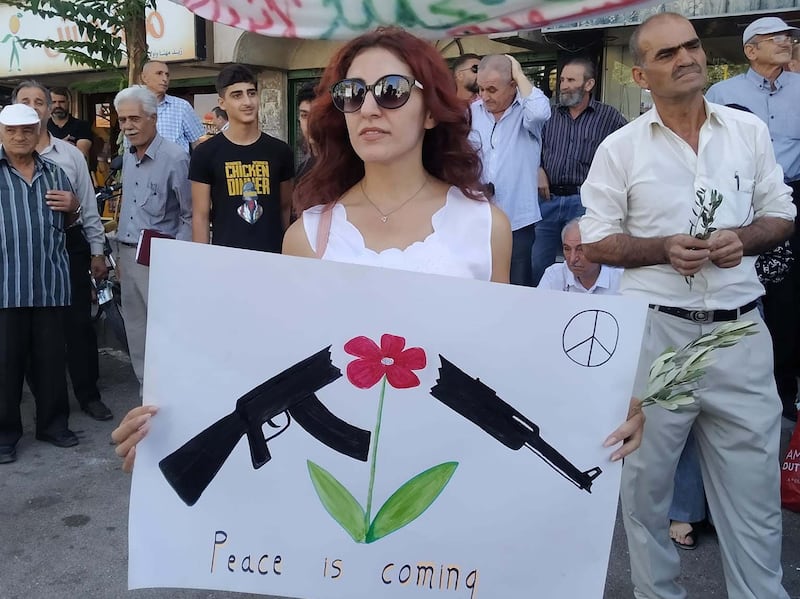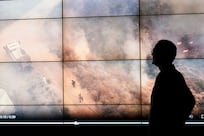Syrian sculptor Suhail Thubian rides a minibus line daily to the main square of his home city of Suweida and helps demonstrators draw posters for protests against President Bashar Al Assad.
One poster he designed, showing an AK-47 split in half by a flower, has become a symbol of the local protest movement, which will be one month old on Sunday.
“It is an expression against militarisation and bloodshed,” the former political prisoner told The National by phone.
He is one of a few veterans in the hirak, or political action, as the protests in the largely Druze area have become known.

With military fortifications and bases for pro-Iranian militias dotting the area, the lack of a response from the regime and its allies to the demonstrations has made Suweida a political anomaly amid the lingering civil war.
The war started in late 2011, after the authorities violently suppressed demonstrations against the regime.
At the core of the demonstrations, and the ensuing militarisation of the revolt, were members of the Sunni majority, marginalised politically since Alawite military officers took power in Syria in 1963.
The system has since been underpinned by the security services and an alliance between the President and minorities such as the Druze, Christians and Ismailis, along with well-to-do Sunnis in the urban centres and Sunni tribes on the fringes.
In 2010, the last year before the Syrian revolt, Druze made up 3 per cent of the country's 22 million people. The sect, concentrated in Suweida and in the Damascus suburb of Jaramana, is among the most educated social strata in Syria and one of the most secular.
They are also a transnational minority, with a presence in Lebanon, Jordan and Israel, where they comprise a small but significant component of the military.
When the 2011 revolt broke out, the community remained largely on the sidelines, with young Druze mostly refusing conscription in the Syrian military.
The formation of anti-Assad militias in the province also preserved a balance between pro and anti-regime groups in the area, which borders Jordan.
But last month, shortly after a sharp rise in fuel prices, demonstrations broke out across Suweida.
The main demands have centred on the implementation of UN resolutions for a political transition in Syria, the end of arbitrary arrests and forced disappearances, the withdrawal of pro-Iranian militias and the elimination of drug trafficking.
The latter is widely seen as being supervised by the ruling elite and its militia allies.
Hundreds of protesters take to the streets in Syria

The protest movement has attracted a younger generation hit badly by the economic collapse over the past decade and an older generation of dissidents, represented by Mr Thubian.
He acknowledges that the street movement has not matured politically and is lacking organised leadership – but that does not matter for now.
“The main issue is that the voice of the people is becoming louder and a sense of solidarity in Suweida is growing,” he said.
Regime calculations
Unlike the Sunni-led demonstrations in 2011, the secular nature of the movement in Suweida has made it difficult for the authorities to label the protesters as religious fanatics.
The demonstrations broke out as the President was seen to have gained politically from Arab normalisation with Damascus.
But press reports of massive investment in Syria from across the region have yet to materialise, while the economy in areas under government control continues to worsen.
The Syrian pound, which has plummeted in value, collapsed further. Syrians have watched the value of their wages all but evaporate amid rampant inflation, and there are fears of worsening hunger.
Fawaz Tello, an independent Syrian opposition figure, said that a dim outlook for the economy seems to have convinced the Druze as a community that their lot cannot improve without the departure of Mr Al Assad.
Mr Tello said the community's status as a close-knit minority, and a strong transborder bond with the Druze in the rest of the Levant, would continue to protect them from direct repression by the authorities in Damascus.
“The regime could resort to assassinations and blame it on ISIS. It could also try to dismiss the Druze as separatists and hope that the demonstrations will eventually lose steam,” he said.
But Mr Tello does not see the stand-off ending soon.
“I think, however, they [the protesters] are aware of all these scenarios,” he said,







